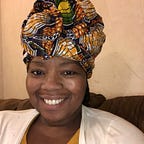Five Ways Racism is Destroying the United States (and how to repair the country).
There are ways to reverse the damage.
I work with students at a summer academic and enrichment program located in Milton, Mass. We’re on a quiet campus nestled in a wooded area away from the hustle and bustle of Boston. There is plenty of green space, large shady trees, and a pond. The students, known as Scholars in the program, spend the day brushing up on academic skills and exploring the campus grounds.
The Scholars come from many neighborhoods in and around Boston. They arrive in the morning by bus and are dropped off in front of the main campus building. They’re greeted by teachers and interns, provided a nutritional breakfast, and then brought to their classrooms. Safety protocols are in place. Everyone is required to wear a mask except when eating and drinking.
I enjoy working with my scholars and learning about who they are and where they come from. We’re creating a community of learners. It’s an ideal situation in an idyllic setting. Children need a space to learn and have fun. The program provides both, encouraging communication, respect, and understanding from everyone.
It just saddens me that our scholars are coming of age in such turbulent times. The country is so divided and distrustful. Politicians need to focus on education, healthcare, and infrastructure. Our elected officials in Washington D.C., are so busy making powerplays that they don’t realize the damage that they’re causing to the country.
Racism is causing the most damage to the social fabric of the U.S. Politicians are cracking down on voting rights and teaching key events in American history. Slavery, the Suffrage Movement, and the Civil Rights Movement are disappearing from history curriculums. Instead of it being 2021, it feels as if the country is heading backward to 1951.
Here are five ways racism is dividing the country:
- White fear and fragility — So many videos showing white women acting like “Karens,” weaponizing the police against Black and Brown people.
- Laws blocking the instruction of Black, Brown, and Indigenous history — Teachers could be fired if they introduce any information to students about the Civil Rights Movement, Cesar Chavez, or the impact of Western expansion on Native Americans.
- Voting Rights — Laws in many states have been changed to make it harder for the poor, the disabled, and people of color to vote. Eliminating ballot boxes, limiting mail-in voting, and changing voting hours. These laws were created by Republican governors in many Southern and Midwestern states.
- White Privilege — How white people move through the world with a sense of entitlement. The ways whiteness and blackness are viewed and treated in everything from healthcare, employment, and the criminal justice system.
- Policing — Video evidence showing the often illegal treatment of Black and Brown citizens, from slamming teen girls to the ground in schools, arresting grandmothers for minor offenses, and shooting Black men and women without cause.
In order to combat these divisive problems, here are some ways America can do better and send racism back into the shadows:
- Increase the number of community meetings and town halls where people can share their experiences and explain why certain actions are unnecessary.
- Explain the meaning of Critical Race Theory and the need for students to be exposed to the complete and accurate history of the United States.
- Expand voting access and allow people to choose the best way to vote. Have candidates of both parties explain their platforms without using lies or propaganda.
- Recognize that racism exists in major areas of life — home, work, and education. Expand opportunities for people of color to fully participate in all aspects of American society.
- Train police cadets about the importance of using words over force to deescalate a situation. Train all officers to use alternative means when someone is having a mental health crisis. Limit deadly force and use it only when the person has been given sufficient chances to comply. Stop shooting and killing Black and Brown children. Have more neighborhood patrols where the officers also live in the community. Have more opportunities for officers to get to know the families in the community.
I believe if cities and states across the country put more resources to improve the quality of life for everyone, racial tensions will decrease. Trust must be established and relationships must be built. The harm from racist practices needs to be acknowledged and addressed to prevent history from repeating itself.
